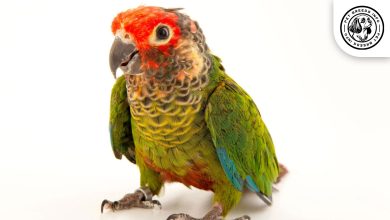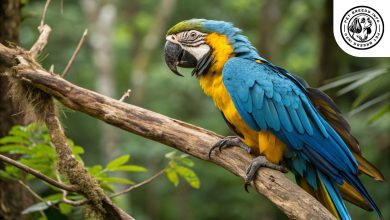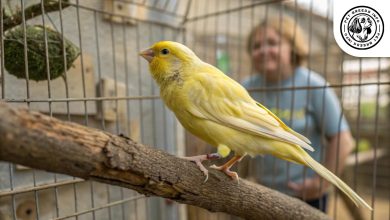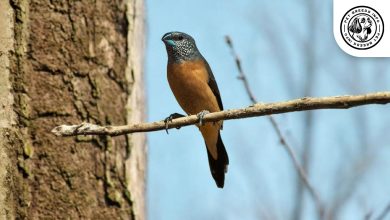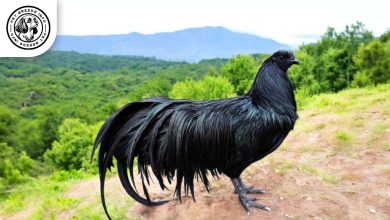Congo African Grey Bird: Personality, Lifespan, Food & Care
General Introduction of the Breed
The Congo African Grey (Psittacus erithacus), also known as the African Grey Parrot, is one of the most intelligent and popular pet parrots worldwide. Native to the dense rainforests of Central and West Africa, this remarkable bird has been admired for centuries for its exceptional cognitive abilities and impressive talking skills.
Historically, African Grey Parrots have been kept as companions dating back to ancient Egypt and Greece. They were particularly cherished by European nobility during the Middle Ages and later became popular pets due to their advanced intelligence and social nature.
Table of Contents
| Common Name | Congo African Grey, African Grey Parrot |
| Scientific Name | Psittacus erithacus |
| Origin | Dense rainforests of Central and West Africa |
| Size | 12 to 14 inches (30 to 35 cm) in length, 14 to 18 ounces (400 to 600 grams) in weight |
| Lifespan | 40 to 60 years |
| Talking Ability | Exceptional, can mimic human speech with astonishing accuracy and develop extensive vocabularies, often understanding context. |
| Colors | Various shades of grey (lighter on the head, darker on wings and back), strikingly red tail feathers. Young birds have dark grey eyes that turn yellow with age. Black beak. |
| Noise Level | Not overly energetic, but requires mental stimulation to prevent boredom. Susceptible to stress from loud noises. |
| Social Behavior | Forms strong bonds with owners, enjoys human interaction, can be sensitive to being left alone, generally gets along with older children, introductions to other pets should be managed carefully. |
Physical Characteristics
The Congo African Grey is a medium-sized parrot with an average length of 12 to 14 inches (30 to 35 cm) and a weight ranging from 14 to 18 ounces (400 to 600 grams). Males and females have similar sizes, making it difficult to determine gender based on appearance alone.
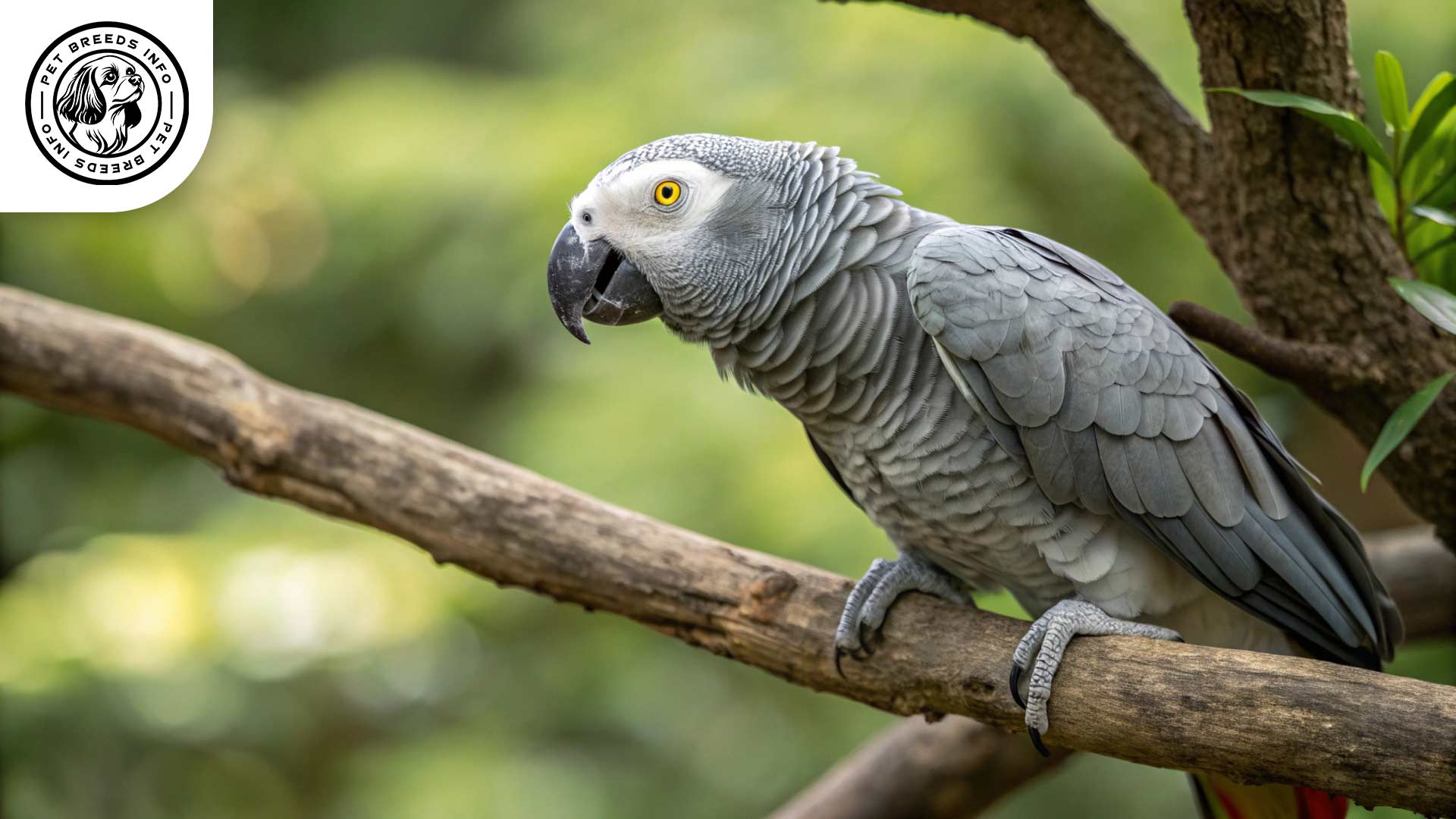
Its distinctive plumage consists of various shades of grey, with a lighter, almost silver-grey color on the head and darker grey on the wings and back. The tail feathers are strikingly red, providing a stunning contrast to the body color.
The eyes of a young African Grey start as dark grey, gradually turning yellow as the bird matures. It has a strong, curved black beak designed for cracking nuts and seeds.
One of its most recognizable features is its sturdy structure and sleek feathering, giving it a refined and elegant appearance.
Read More: Hook Bill Duck
Personality and Temperament
The Congo African Grey is known for its extraordinary intelligence, comparable to that of a young child. It is a quick learner and can mimic human speech with astonishing accuracy. Many African Grey owners claim their birds develop extensive vocabularies and even understand context.
Although not overly energetic, this parrot enjoys mental stimulation and requires plenty of activities to prevent boredom. It forms strong bonds with its owner and can become emotionally attached, often preferring human interaction over other pets.
While generally friendly and affectionate, African Greys can be sensitive to their surroundings. Sudden changes in routine, environment, or loud noises may cause stress, leading to feather plucking or mood swings.
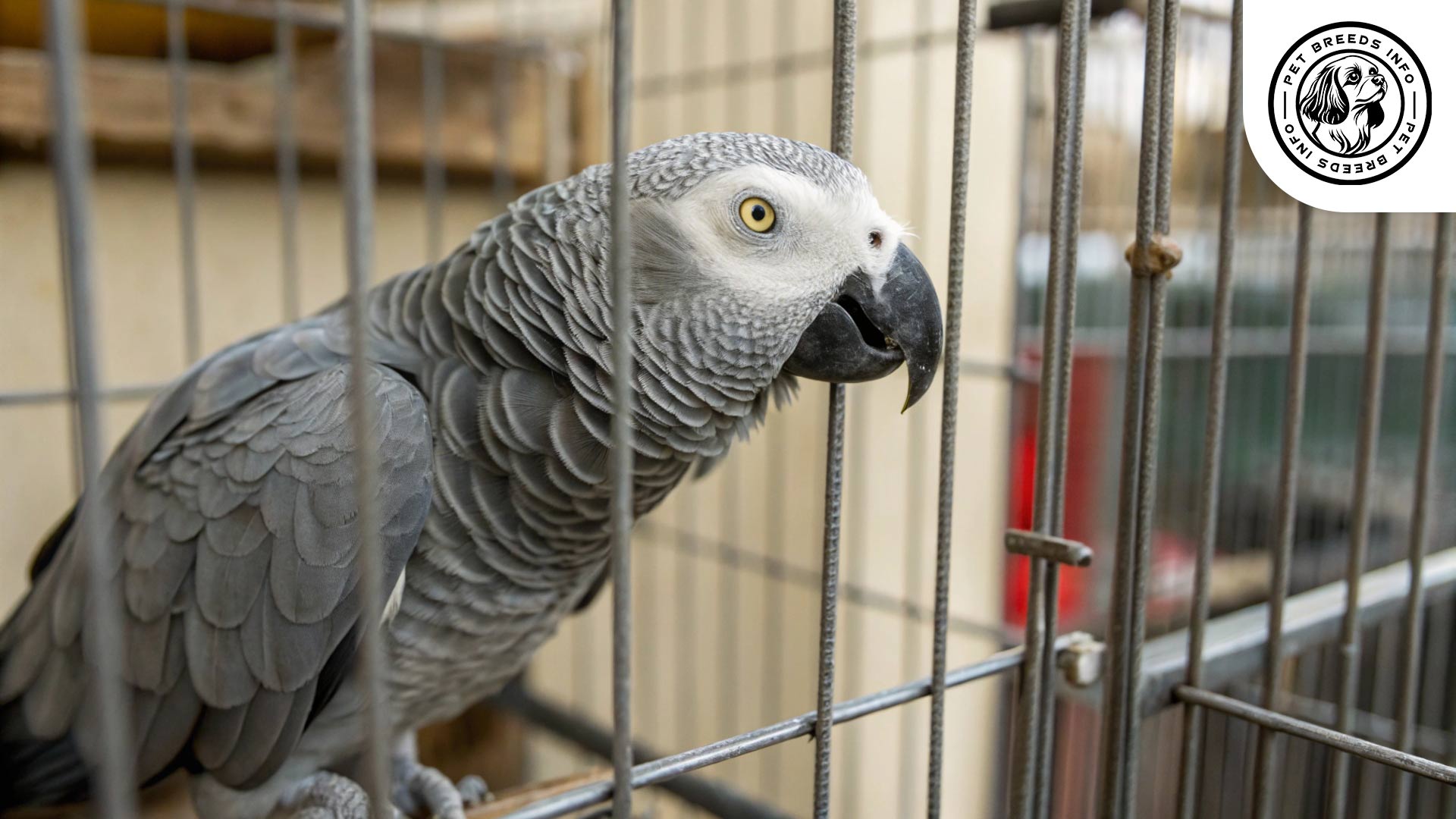
Care and Maintenance Requirements
Providing an African Grey with sufficient mental and physical stimulation is essential. They thrive in spacious environments and should have a large cage with plenty of perches and interactive toys.
Daily out-of-cage time is necessary for exercise and social interaction. Apartment living is possible, but owners must ensure a quiet and stable atmosphere.
Regular feather maintenance, nail trims, and beak checks are required. Frequent bathing or misting helps maintain healthy feathers, and chewing on bird-safe wood or mineral blocks prevents overgrown beaks.
These parrots are sensitive to environmental factors such as drafts, smoke, and extreme temperatures, so their living space should be well-ventilated but free from harsh elements.
Diet and Nutrition
African Greys require a balanced diet composed of high-quality pellets, fresh fruits, and vegetables. Leafy greens, carrots, apples, and berries are great choices for nutritional variety.
Seeds and nuts should be given in moderation to prevent obesity, as they are high in fat. Calcium-rich foods such as cuttlebones are beneficial for maintaining bone health.
Certain foods, including chocolate, caffeine, avocado, and salty or sugary treats, should be avoided as they are toxic to parrots.
African Greys should be provided with fresh water daily, and their meals should be portion-controlled to prevent overeating.

Health and Common Medical Issues
Common health concerns for African Greys include respiratory infections, calcium deficiencies, and feather plucking due to stress or boredom. Psittacine beak and feather disease (PBFD) is another potential health issue.
They have an impressive lifespan of 40 to 60 years, making them long-term companions. Regular check-ups with an avian veterinarian, along with proper nutrition and mental enrichment, help prevent health problems.
Vaccinations and parasite control are generally not required for indoor-only birds, but routine vet visits ensure early detection of any potential health issues.
Training and Behavior Management
African Grey Parrots are highly trainable and thrive on positive reinforcement techniques such as treats and praise. They excel at learning tricks, commands, and speech patterns.
Early socialization is crucial to prevent fearfulness or aggression. Exposure to various people, sounds, and environments helps them become well-adjusted pets.
Reward-based training is the most effective method for teaching an African Grey, as punishment can lead to stress and behavioral problems.
Read More: Red-headed Finch
Interaction with Other Animals and Humans
African Greys form strong bonds with their owners and require daily interaction to avoid loneliness. If left alone for extended periods, they may develop separation anxiety.
They generally get along well with older children who respect their space. However, young children should always be supervised to ensure gentle handling.
They can coexist with other birds and pets, but introductions should be carefully managed. Some African Greys may become territorial or jealous of other animals.
Ideal for dedicated owners, these parrots require a balance between independence and human companionship to remain happy.

Price and Availability
The cost of a Congo African Grey ranges from $1,500 to $3,500, depending on factors such as age, breeder reputation, and hand-rearing experience.
It is essential to purchase from a reputable breeder or a responsible bird adoption center to ensure the bird is healthy and well-socialized.
Potential owners should also consider costs for a spacious cage, toys, food, and veterinary care, as these parrots are a long-term commitment.
Conclusion and Final Thoughts
The Congo African Grey is an extraordinary pet for those willing to dedicate time and effort to its care. With its high intelligence, long lifespan, and affectionate nature, it makes a rewarding companion.
Ideal for experienced bird owners or individuals who can provide mental stimulation and daily interaction, the African Grey thrives in a stable and loving environment.
Before bringing one home, potential owners should be prepared for a long-term commitment, as these parrots require significant time, socialization, and enrichment to remain happy and healthy.
Read More: Red-headed Quelea
FAQ
How intelligent are Congo African Greys?
They are highly intelligent, comparable to a young child, and known for their exceptional learning and talking abilities.
What is the average lifespan of a Congo African Grey?
They have an impressive lifespan of 40 to 60 years, making them a long-term commitment.
What kind of care do African Greys need?
They require a spacious cage, daily out-of-cage time, mental and physical stimulation, a balanced diet, and regular maintenance like feather and nail care.
Can Congo African Greys talk?
Yes, they are renowned for their ability to mimic human speech with great accuracy and often understand the context of what they are saying.
How much does a Congo African Grey typically cost?
The cost can range from $1,500 to $3,500, depending on various factors.

